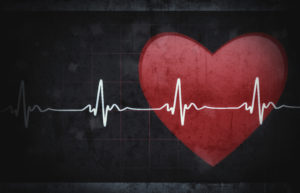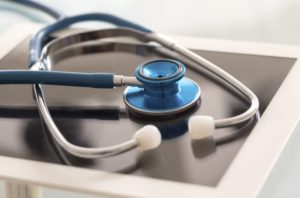More Than Your Prints
 Biometrics isn’t just about authentication, and that is especially true when it comes to healthcare. While, as we saw last week, biometrics based security can go a long way in improving operations and trust in clinics, physician offices and pharmacies, there are other applications that reach beyond proving your identity that are poised to change how, when, and where we receive professional medical care. I am talking, of course, about the vital sign biometrics solutions enabling remote patient care.
Biometrics isn’t just about authentication, and that is especially true when it comes to healthcare. While, as we saw last week, biometrics based security can go a long way in improving operations and trust in clinics, physician offices and pharmacies, there are other applications that reach beyond proving your identity that are poised to change how, when, and where we receive professional medical care. I am talking, of course, about the vital sign biometrics solutions enabling remote patient care.
Authentication, identification, record keeping or remote monitoring– they all add up to help address the same broad challenge. Medical professionals and healthcare facilities simply need to make the most efficient use of resources, among which space and time are premium. The use of vital biometrics in remote care applications serves both demands, freeing up care staff time tables as well as bed space normally taken up by chronic patients while still offering critical around the clock observation.
Space, Time, Freedom
 Innovations in mobility, wearable tech and vital biometric monitoring are at the heart of the next generation of patient care. Some of the most exciting names in cardiac biometrics and wearable sensors have been working hard to make advanced home care a reality.
Innovations in mobility, wearable tech and vital biometric monitoring are at the heart of the next generation of patient care. Some of the most exciting names in cardiac biometrics and wearable sensors have been working hard to make advanced home care a reality.
Olea Sensor Networks, a company specializing in Internet of Things and wireless sensor networks, is one of the companies bringing advanced vital biometrics to the world of remote healthcare. In December the company announced the OS-3008 sensor—designed specifically for health monitoring and able to measure cardiac and respiratory metrics—which sports a number of interesting features that make it very appealing for remote care applications.
First, the sensor is small and wireless. The OS-3008 is smaller than a business card and can be placed anywhere it needs to be to best monitor a user’s health. Second, it’s contactless, actually able to get its readings without the need for direct, skin-to-sensor interaction. This allows it to be placed in a patient’s front pocket, for instance, maximizing user comfort and convenience. Finally (and here’s the clincher) the OS-3008 is HIPAA compliant.
All together, the OS-3008 sensor from Olea exemplifies the way remote monitoring tech should be: non-invasive, accurate, and practically invisible. In a remote monitoring scenario, the very fact that a patient isn’t in a hospital helps address the time and space saving needs of professionals, but with recent advances like those seen in Olea’s contactless wireless sensors, the patient also benefits from greater convenience and freedom.
Health in the Home
 The benefits of remote care are plentiful and there’s good news: biometric remote monitoring is happening right now and it’s working wonders.
The benefits of remote care are plentiful and there’s good news: biometric remote monitoring is happening right now and it’s working wonders.
Phelps Memorial Hospital Center, based in New York, has implemented biometric telehealth in partnership with Visiting Nurse Association of Hudson Valley. In terms of biometrics, the system can measure a patient’s weight, pulse, and blood pressure readings in her own home. The project was undertaken with the above stated intentions in mind and last spring the Center lauded the program’s success. And Phelps Memorial isn’t the only party reporting success in remote care: around the same time last year AMC Health was touting the results of a study on the efficacy of biometric remote care solutions.
AMC Health’s study showed impressive stats: better care results and reduced costs. Reporting on the study last April, Alex Perala wrote–
The 541 participating patients received care integrating Bluetooth-enabled biometric sensors and an interactive voice response system for capturing symptom and behavioural data. What it found was that the patients, all of whom had previously been diagnosed with heart failure, were 23 percent less likely to need in-hospital treatment, and those who were hospitalized were 44 percent less likely to be re-hospitalized within 30 days.
Costs were way down, too. Patients paid 11.3 percent less for their care, and the program saw an overall net savings of $2.7 million over the two years of the study, which translates to a savings of three dollars for every dollar spent.
In the end, with remote vital sign monitoring in the healthcare space we see the same results as we usually do with mobile biometrics: efficiency, convenience, safety. Just as mobile biometric authentication allows you to do government eServices or large financial transactions from remote locations, so can vital biometrics allow you to receive professional healthcare. When biometrics can measure you anywhere, your most important transactions, be they financial, personal, governmental or medical, can come to you with the quality, trust, and assurance they demand.
*
Join FindBiometrics throughout February as we continue to examine biometrics in healthcare. Join in the conversation by following us on Twitter and tweeting with the hashtag #FBHealthcare.
—
February 19, 2016 – by Peter B. Counter


Follow Us